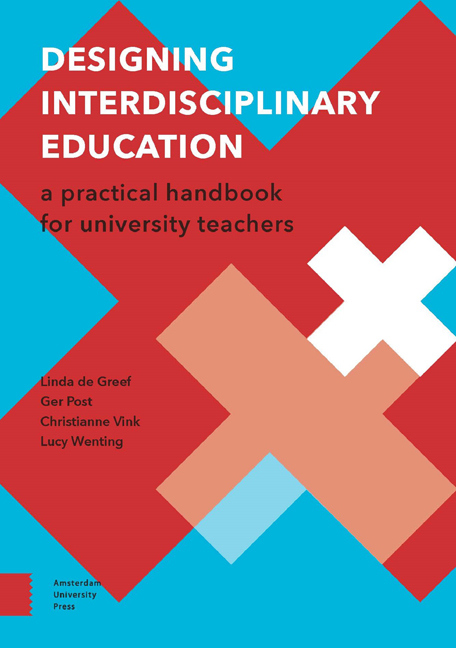Book contents
- Frontmatter
- Contents
- Acknowledgements
- 1 Introduction
- 2 An Overview of the Development Stages
- 3 Unravelling Interdisciplinary Understanding
- 4 Developing the Raw Sketch
- 5 Formulating Interdisciplinary Learning Outcomes
- 6 Embedding Integration in the Programme Design
- 7 Hiring and Engaging Faculty
- 8 Exploring the Teaching Philosophy and Didactic Methods
- 9 Assessment of Interdisciplinary Learning Outcomes
- 10 Interdisciplinary Teaching in Practice
- 11 Programme Assessment and Adjustment
- Appendices
- References
- Colophon
3 - Unravelling Interdisciplinary Understanding
- Frontmatter
- Contents
- Acknowledgements
- 1 Introduction
- 2 An Overview of the Development Stages
- 3 Unravelling Interdisciplinary Understanding
- 4 Developing the Raw Sketch
- 5 Formulating Interdisciplinary Learning Outcomes
- 6 Embedding Integration in the Programme Design
- 7 Hiring and Engaging Faculty
- 8 Exploring the Teaching Philosophy and Didactic Methods
- 9 Assessment of Interdisciplinary Learning Outcomes
- 10 Interdisciplinary Teaching in Practice
- 11 Programme Assessment and Adjustment
- Appendices
- References
- Colophon
Summary
‘We are not students of some subject matter, but students of problems. And problems may cut right across the boundaries of any subject matter or discipline.’
Karl Raimond Popper
The term ‘interdisciplinarity’ has become a buzzword in higher education in recent years and has been used to describe varying types of education. But what do we mean by interdisciplinarity? And how does it relate to other terms that are sometimes used interchangeably, such as transdisciplinarity and multidisciplinarity? In this chapter we will describe the different types of interdisciplinarity, after which we discuss the key factor in interdisciplinary education: integration. The last part of the chapter focuses on how interdisciplinarity can be perceived in an educational context and how it can be made tangible by training specific skills related to interdisciplinarity. Encouraging students to not only acquire knowledge but also develop problem-solving skills meant to tackle the difficult, complex problems of our time is a goal pursued by many teachers, especially those who use interdisciplinary curricula.
The definition of interdisciplinarity
Understanding interdisciplinarity begins, in our view, with a clear understanding of what a discipline is. We define a discipline as a field of science with a particular object of research and a corresponding body of accumulated specialist knowledge (Menken & Keestra, 2016). This knowledge is effectively organised by and expressed through theories, concepts and assumptions inclusive of its discipline-specific terminologies and technical language. A discipline also has its own specific research methods and an institutional manifestation, usually through universities. The last criterion is especially important to our endeavour, since reproduction of a discipline from generation to generation typically requires an educational component (Krishnan, 2009). These disciplines usually provide a specific perspective on (part of) a problem or topic.
With interdisciplinary studies, the insights emerging from those disciplinary perspectives are integrated in order to come to a more comprehensive understanding of the problem or question. This means that research, for example, will integrate the relevant concepts, theories and/or methodologies from different academic disciplines as well as the results or insights these disciplines generate (Gaff & Ratcliff, 1997; Menken & Keestra, 2016). For instance, in cancer treatment it may be possible to avoid the harmful side effects of chemotherapy by targeting drug delivery to cancerous cells through specifically engineered nanoparticles.
- Type
- Chapter
- Information
- Designing Interdisciplinary EducationA Practical Handbook for University Teachers, pp. 28 - 42Publisher: Amsterdam University PressPrint publication year: 2017



